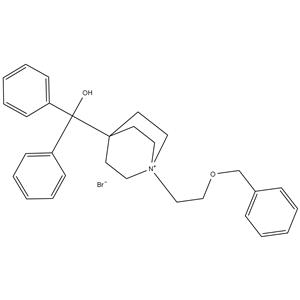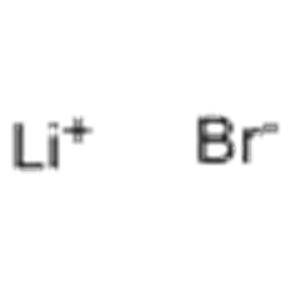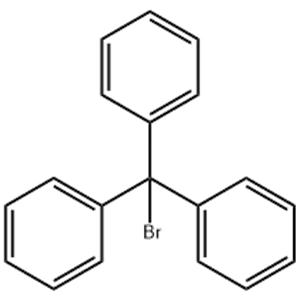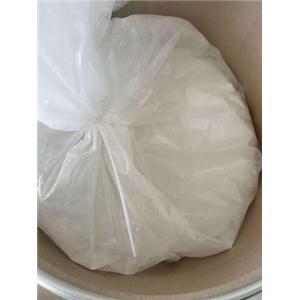
Umeclidinium bromide NEW
| Price | $5 | $0.1 |
| Package | 1KG | 1000KG |
| Min. Order: | 1KG |
| Supply Ability: | g-kg-tons, free sample is available |
| Update Time: | 2024-04-16 |
Product Details
| Product Name: Umeclidinium bromide | CAS No.: 869113-09-7 |
| Min. Order: 1KG | Purity: 99% |
| Supply Ability: g-kg-tons, free sample is available | Release date: 2024/04/16 |
| Name: Tina | COA, MSDS: Available, contact us for details |
| Origin: Manufacturer, advantage product | Delivery: By express, by air, by sea |
| Packaging: bag/bottle/drum/IBC | Lead time: In stock, ready for shipment |
1. Materials information
| Name | umeclidinium bromide |
|---|---|
| Synonym | More Synonyms |
| Description | Umeclidinium bromide is a novel mAChR antagonist. The affinity (Ki) of Umeclidinium bromide for the cloned human M1-M5 mAChRs ranges from 0.05 to 0.16 nM. |
|---|---|
| Related Catalog | Signaling Pathways >> GPCR/G Protein >> mAChR Signaling Pathways >> Neuronal Signaling >> mAChR Research Areas >> Inflammation/Immunology |
| Target | Ki: 0.16 nM (M1 mAChR), 0.15 nM (M2 mAChR), 0.06 nM (M3 mAChR), 0.05 nM (M4 mAChR), 0.13 nM (M4 mAChR)[1] |
| In Vitro | In human embryonic kidney 293 cells, Umeclidinium bromide (GSK573719A) inhibits the human ether-a-go-go-related gene channel tail current in a concentration-dependent manner (IC50=9.4 μM)[1]. Umeclidinium bromide, previously known as GSK573719, is a novel high-affinity specific mAChR antagonist. It is a potent agent that demonstrates slow functional reversibility at cloned human M3 mAChRs and at endogenous mAChR in isolated human bronchus[2]. |
| In Vivo | When Umeclidinium bromide (GSK573719A) is given once daily to mice for 5 consecutive days (0.025 μg intranasally), the level of inhibition on the fifth day is modestly increased above that obtained after a single administration to the same mice (60 versus 35%, respectively). After the fifth day of dosing, the mice are rested for 5 additional days, allowing bronchomotor tone to return to baseline levels. On the sixth day, the mice receive one last dose of antagonist and are once again challenged with Mch. The level of inhibition is essentially the same as that found on the first day of testing, indicating that tolerance is not evident with repeated intranasal delivery of Umeclidinium bromide. By contrast, when Umeclidinium bromide is given orally (2.0 mg/kg) to mice at a dose 100 times the ED50 value (intranasal), there is no observable protection against an Mch challenge[1]. |
| Kinase Assay | Ligand binding assays with Umeclidinium bromide (GSK573719A) and [3H]-N-methyl scopolamine (0.5 nM) are performed using a scintillation proximity assay for M1, M2, and M3 mAChRs and a filtration assay for M4 and M5 mAChRs. For the scintillation proximity assay assay, membranes are incubated with wheat germ agglutinin beads in 50 mM HEPES buffer, pH 7.4, at 4°C for 30 minutes and then with the radioligand in a 96-well OptiPlate for 2 hours at room temperature in the presence of vehicle (1% DMSO) or GSK573719 (0.01-300 nM). At the end of the incubation, the plates are centrifuged (for 5 minutes at 2000g), and radioactivity is counted. For the filtration assay, membranes (M4 and M5) are similarly incubated in HEPES buffer containing the radioligand for 2 hours at room temperature in the presence of vehicle (1% DMSO) or Umeclidinium bromide (0.03-300 nM). Atropine is used as a reference agent. Reactions are terminated by rapid filtration through GF/C filters (glass microfiber binder free 1.2 μ). Membranes are washed with ice-cold 50 mM HEPES and transferred to scintillation vials. Radioactivity is counted in a Scintillation Counter. Reactions are terminated by rapid filtration. Data are obtained from three independent experiments. Specific binding is determined by subtracting nonspecific binding (using 0.3 μM atropine) from total binding. The inhibition constant (Ki) for Umeclidinium bromide is calculated. Membranes containing M3 mAChRs are also incubated for 2 hours at room temperature with increasing concentrations of [3H]-N-methyl scopolamine (0.08-9.24 nM) in the presence or absence of Umeclidinium bromide (0.2-0.5 nM) in 50 mM HEPES, pH 7.4. Nonspecific binding is determined using 10 μM atropine. The saturation data are converted to a scatchard plot for analysis[1]. |
| Animal Admin | Mice[1] Age-matched male BALB/c mice (23-25 gm) are pretreated intranasally (50 μL per mouse) with vehicle (0.9% saline) or Umeclidinium bromide at intervals (0.25-48 hours) prior to methacholine challenge, and placed into individual plethysmograph chambers. Fresh air is supplied by bias flow pumps to the chambers. After baseline respiratory [enhanced pause (Penh)] values are collected, the mice received methacholine (30 mg/mL or EC80) by aerosol delivery (flow=1.6 mL/min×2 minutes). An average Penh is then calculated for 5 minutes. Penh=[(expiratory time/relaxation time)?1]×(peak expiratory flow/peak inspiratory flow), and relaxation time is the amount of time required for 70% of the tidal volume to expire. In some cases, animals are treated on multiple, consecutive days as described in the figure legends. The data are expressed as the mean±S.E.M. percent inhibition of Penh or (mean Penh value of vehicle treated group-Penh for each drug-treated animal) divided by (mean Penh value of vehicle treated group)×100%. Data are analyzed using commercially available software. |
| References | [1]. Salmon M, et al. Pharmacological characterization of GSK573719 (umeclidinium): a novel, long-acting, inhaled antagonist of the muscarinic cholinergic receptors for treatment of pulmonary diseases. J Pharmacol Exp Ther. 2013 May;345(2):260-70. [2]. Cazzola M, et al. Pharmacology and therapeutics of bronchodilators. Pharmacol Rev. 2012 Jul;64(3):450-504. [3]. Calzetta L, et al. Pharmacological characterization of the interaction between umeclidinium and vilanterol in human bronchi. Eur J Pharmacol. 2017 Jul 14. pii: S0014-2999(17)30470-3. |
| Molecular Formula | C29H34BrNO2 |
|---|---|
| Molecular Weight | 508.490 |
| Exact Mass | 507.177277 |
| PSA | 29.46000 |
| LogP | 2.10280 |
| Storage condition | -20℃ |
| Umeclidinium bromide |
| Umeclidinium bromide [USAN] |
| Umeclidinium bromide (JAN/USAN) |
| 1-[2-(Benzyloxy)ethyl]-4-[hydroxy(diphenyl)methyl]-1-azoniabicyclo[2.2.2]octane bromide |
| diphenyl-[1-(2-phenylmethoxyethyl)-1-azoniabicyclo[2.2.2]octan-4-yl]methanol,bromide |
| UNII-7AN603V4JV |
| 1-Azoniabicyclo[2.2.2]octane, 4-(hydroxydiphenylmethyl)-1-[2-(phenylmethoxy)ethyl]-, bromide (1:1) |
| GSK573719A |
| Umeclidinium (bromide) |
2. Packaging of materials
For powders: normal is 25kgs/Drum or bag, or larger/smaller package as request.
For liquids: normal 25kgs/drum, 180-300kgs/bucket, or IBC, determined by the nature of the product.
Or smaller package 1kg/bottle, 10kgs/bottle as request.


3. Shipping & Delivery
By Express
Provide door to door service
Suitable for goods under 50kg
Delivery: 3-7 days
Cost: low cost

By Air
Provide airport to airport service
Suitable for goods over 50kg
Delivery: 3-14 days
Cost: high cost

By Sea
Provide seaport to seaport service
Suitable for goods over 100kg
Delivery: 2-45 days
Cost: low cost

4. Contact information
For more details, pls contact us freely.
Email address: Tina@fdachem.com
Mob: 86 13213167925
WhatsApp/Skype/Wechat/LINE: 86 13213167925
Company Profile Introduction
You may like
Recommended supplier
| Product name | Price | Suppliers | Update time | |
|---|---|---|---|---|
| $34.00/1mg |
VIP5Y
|
TargetMol Chemicals Inc.
|
2024-11-18 | |
| $10.00/1kg |
VIP1Y
|
Wuhan Xinhao Biotechnology Co., Ltd
|
2024-03-11 | |
| $0.00/1kg |
VIP2Y
|
Hebei Kingfiner Technology Development Co.Ltd
|
2023-12-20 | |
| $70.00/1kg |
VIP2Y
|
Zibo Hangyu Biotechnology Development Co., Ltd
|
2023-11-20 | |
| $10.00/1000g |
Anhui Zhongda Biotechnology Co., Ltd
|
2023-10-18 | ||
| $100.00/25kg |
VIP5Y
|
Hebei Yanxi Chemical Co., Ltd.
|
2023-09-18 | |
| $0.00/1Kg/Bag |
VIP4Y
|
Sinoway Industrial co., ltd.
|
2023-07-11 | |
| $0.00/25kg |
VIP5Y
|
Hebei Mojin Biotechnology Co., Ltd
|
2023-06-01 | |
| $0.00/25KG |
PNP Biotech Co. Ltd
|
2022-10-26 | ||
| $10.00/1G |
Lihe Pharm Technology(Wuhan)Co.,Ltd
|
2022-08-04 |
- Since: 2023-02-10
- Address: Room 01, 2288 E05, Building 14, East Henan University, Science and Technology Park, 279 Xisanhuan Ro








 China
China